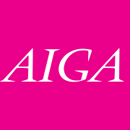My design career started with a burning envy of artists.
I was in sixth grade when I read in a magazine (possibly Highlights), that there were kids who had started drawing pretty much as soon as they could hold a crayon. Seeing album art, movie posters, and the covers of paperbacks in the supermarket made me think about how long they must have practiced their craft to be able to create these fantastic works of art without a struggle. At 12 years old, I was, in my perspective, too late to the game. Hell, I couldn’t even trace Iron Maiden cover-art, much less draw it freehand.
In my defense, I was trying to trace on my t-shirt.
A chance malfunction with my family’s television set combined with the discovery of hundreds of discarded yellow flyers with blank space on the back resulted in a summer of illustration so prolific that I doubt I’ve ever equaled it. I started copying models from my mom’s Vogues as well as each panel from Cracked Magazine featuring the fictional entertainment reporter Nanny Dickering.
I used to read Cracked for the interviews. Seriously.
Since the magazine was monthly, I would copy the same issue’s Nanny again and again, often until dawn, and pretty much throw them away right afterwards because they looked like sketches. I had to see that slick, finished look of the magazine illustrations in my own work to believe I had this mythical talent buried deep somewhere. I figured I’d be able to express myself better if I just had the tools. I wanted to show the world what was important to me.
Keep in mind it was 1989 and I was 12, so this was considered “important”.
Finally, I asked for a legitimate sketchbook after months drawing because some of my work started to look almost fridge-worthy and that yellow paper wasn’t very professional-looking. Unfortunately, that sketchbook actually began a sort of neurosis that I still struggle to break today.
See, those printouts were going in the trash anyway but that sketchbook, with its clean, white paper, was something that needed to be bought. I couldn’t just put anything on there; it had to be finished and worthy to show. Eventually, my sketchbook went almost entirely unused as I continued to work with those disposable flyers. The cartoons became figures and the concepts of perspective and dimension, while primitive, seemed to develop on their own.
I quickly advanced to copying Nagel prints at the mall.
Unfortunately, my environment just wasn’t conducive to a career in art. I went to Catholic school most of my life and there wasn’t much encouragement for what I was doing. Plus, nothing I did ever looked good enough for me because, as I somewhat correctly reasoned, I didn’t have access to things like an airbrush or a Linotype machine. They were just too far out of my reach without any support and I wasn’t aware of any other options. So, I pretty much abandoned drawing altogether until about ten years ago when I saw a video of an artist working with traditional-looking brushes and type in Photoshop. All the tools I needed to create professional work were in one package.
Which meant even better robotic pin-up monster women.
A career in art appeared to be a realistic goal once again. I abandoned my sketchbook while obsessing with the software, using the illustration skills I’d developed throughout adolescence as an anchor. It was easy to think of sketching as wasting valuable time because, after all, aren’t I just drawing the same thing, again and again, when I could go right into the software, knock out a design, then start a new, more exciting project I’d been thinking about?
For me, the bane of Photoshop was that while I was creating designs that looked clean, they weren’t as composed as the stuff in my old sketchbooks. With those solid colors and perfect type, I was fooled into a false sense of accomplishment; the exact opposite of what had happened back in school. Some of my earliest digital works show promise but there’s little of the original intent within the finished project.
I was denying the design its sketch-roots. I was denying it a soul.
Because nothing needs a soul like my badge honoring Klendathu veterans.
Sketching is also my way of being happily productive on my time off. It’s not everyone’s idea of a good time, I know, and I’ve been accused of being too involved with my work. Sketching isn’t work, though. It’s therapeutic and fun, a secret I keep to myself until I get that random assignment that can benefit from a sketch I might have made years ago. Although, when it comes to beginning an assignment, I often find myself going to the computer first to “save time”.
And because my sketchpad doesn’t have Wikipedia on it.
So, I’ve recently deemed a room in my house “The Analog Room”. No Photoshop or Wacoms. No computers at all. There’s only a record player for music because iPhones are forbidden. I’ve even got an old-school desk, much like the one I had at Holy Angels, back in 6th grade. It’s proven to be exactly the sort of seating and surface I need to produce my best work. The increase in quality is noticeable enough to keep me motivated.
Also increased: Catholic artifacts.
Interested in developing a sketch habit? Check out Mike Rohde’s great, quick read, The Sketchnote Handbook. Here’s a preview:
Greg Jericho is the Digital Publications Chair for AIGA Baltimore. He also admits that, despite all the posters and t-shirts he had as a teenager, he never actually listened to Iron Maiden.
